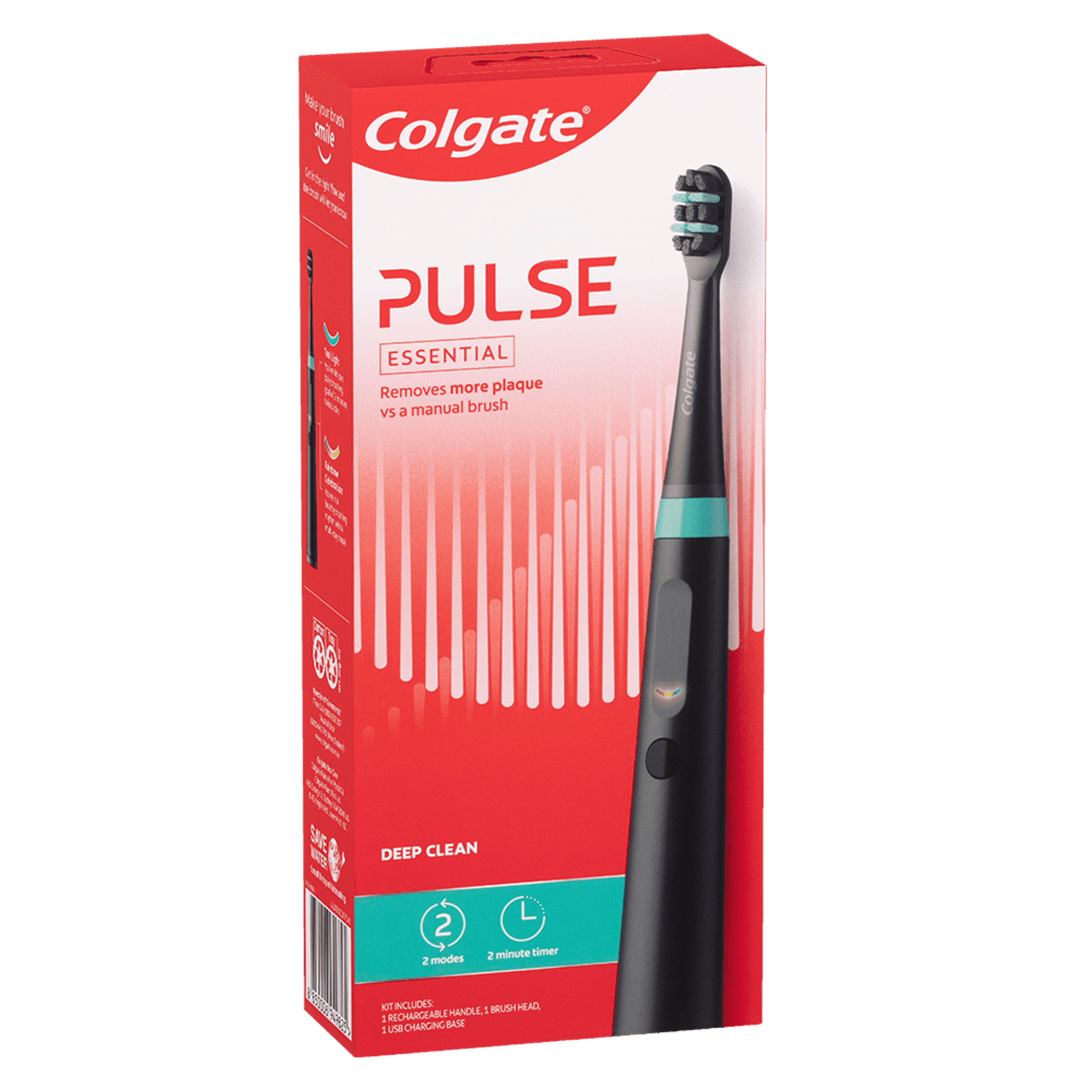-
-

BRUSHING & FLOSSING
How to BrushWhat Is the Right Way to Brush?
Proper brushing takes at least two minutes — that's right, 120 seconds!...

BRUSHING & FLOSSING
How To FlossWhat is the Right Way to Floss?
Proper flossing removes plaque and food particles in places where a toothbrush cannot easily reach... -
Science & Innovation
- Colgate® | Toothpaste, Toothbrushes & Oral Care Resources
- Oral Health
- Should You Buy A Sonic Electric Toothbrush?


When it comes to choosing a toothbrush, the options are getting more technologically advanced by the day. The latest innovation is the sonic toothbrush, a type of electric toothbrush that creates sonic waves as it cleans. But what exactly does this mean for your oral health, and is a sonic toothbrush worth the investment?
How Do Sonic Toothbrushes Work?
A sonic toothbrush vibrates up to ten times more quickly than a standard electric toothbrush. As well as brushing away plaque and food debris, this ultra-fast action sends acoustic pressure waves through the toothpaste and water in your mouth. This blasts tiny bubbles of fluid into the spaces your toothbrush can’t reach, giving you a more thorough clean.
Is A Sonic Toothbrush Worth The Investment?
Sonic toothbrushes tend to be expensive. Understandably, you’ll want to know if this is reflected in the effectiveness of the brush.
A 2017 analysis in the Journal of Clinical Dentistry looked at multiple studies comparing manual and sonic toothbrushes. Researchers found that sonic toothbrushes decreased plaque and gingivitis (early stage gum disease) significantly more than manual brushes.
Some sonic brushes have sophisticated extra features, too, such as sensors and algorithms that track how, where and when you brush. Using this information, they can offer you tailored advice on improving your brushing technique.
In addition to the oral health benefits, sonic toothbrushes can make brushing easier for people with limited dexterity, such as arthritis sufferers, the elderly and young children. Little ones also tend to find sonic toothbrushes more fun to use, which is particularly helpful if your child is a reluctant brusher.
The Importance Of Proper Toothbrushing Technique
Despite the many benefits of sonic toothbrushes, it’s important to note that no toothbrush can protect you from bad brushing habits. If you don’t brush frequently enough, or if you brush incorrectly, plaque can still build up and cause tooth decay, gum disease, sensitivity, and other oral health problems.
Health Direct recommends brushing twice a day (morning and night) for at least two minutes. They offer the following tips on good brushing technique:
- Divide your mouth into four quarters and spend at least 30 seconds on each (a sonic toothbrush with a pacer can help you with this).
- Hold the toothbrush against your teeth and tilt the bristles at a 45o angle against your gumline.
- Move the brush over the surface of the teeth in small, gentle, circular motions.
- Repeat the motion on every surface of every tooth, including the chewing surface and the inside surface.
- Brush your tongue gently to remove bacteria.
- After brushing, spit out the toothpaste but do not rinse your mouth.
Health Direct advises waiting at least 30 minutes after eating before brushing your teeth, especially if you’ve had food or drinks high in acid. That’s because the acid softens the tooth enamel and leaves it vulnerable to erosion from brushing, but waiting 30 minutes gives your saliva enough time to neutralise the acid.
When combined with good oral health habits, a sonic toothbrush can be a worthwhile investment for your dental health. Speak to your dentist for advice on choosing the right sonic toothbrush for you.
Related Articles
This article is intended to promote understanding of and knowledge about general oral health topics. It is not intended to be a substitute for professional advice, diagnosis or treatment. Always seek the advice of your dentist or other qualified healthcare provider with any questions you may have regarding a medical condition or treatment.
Related Products

Helping dental professionals
More professionals across the world trust Colgate. Find resources, products, and information to give your patients a healthier future











